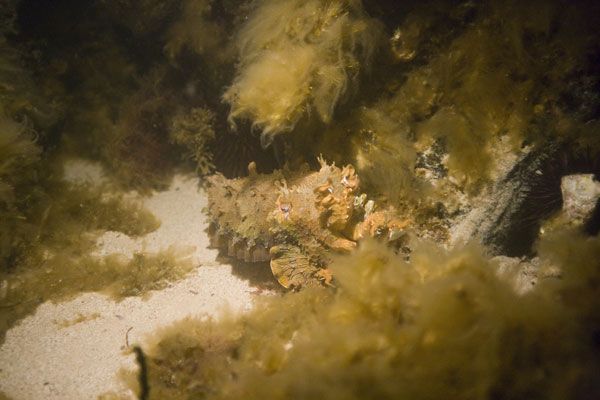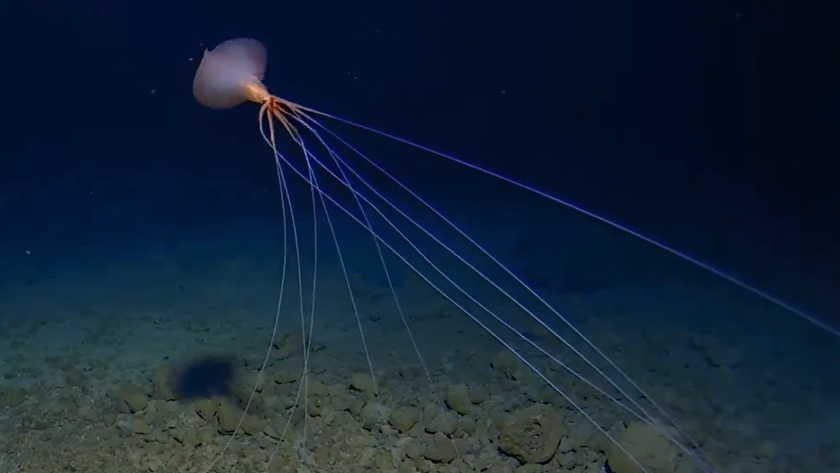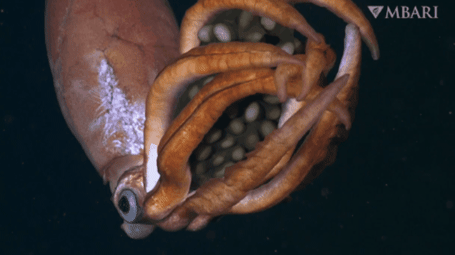Night Vision Helps With Camouflage In Briny Deep

Marine masters of disguise and octopus relatives, cuttlefish can instantaneously camouflage themselves against any background--even in the dark of night, proving that they must have extremely fine-tuned night vision, according to a new study.
Cuttlefish, octopuses and squid are members of a group of animals called cephalopods, which have evolved the ability to camouflage to hide from predators, such as fur seals, bottlenose dolphins, and barracudas, but the newly discovered abilities of cuttlefish have impressed scientists with their sophistication.
To blend in with their surroundings, stealthy cuttlefish use visual cues to match themselves to any background: sand, seagrass, rocks and coral. And they don't just match to color, but also the pattern, brightness and texture of their surroundings. For example, if they're settled against smooth algae, their skin will be smooth, but against rough, wrinkly algae, their skin will become wrinkled.
"Every time an octopus or cuttlefish moves one meter this way or that way, the visual background is usually different, and they adjust their pattern, so they have this on-going, wonderful system of fine-tuning their camouflage," lead study author Roger Hanlon of the Marine Biological Laboratory in Massachusetts said.
Keen eyesight
Most observations of these creatures have only been made during the day. Scientists weren't sure if cuttlefish all went into one camouflage pattern or if could make the same variations they did during the day.
Hanlon used a remotely operated vehicle (ROV) to spy on the cuttlefish at night. Because bright lights disturb the creatures, the ROV is equipped with a red light (cuttlefish can't see in that part of light spectrum) to help scientists see the cuttlefish's natural behavior.
Sign up for the Live Science daily newsletter now
Get the world’s most fascinating discoveries delivered straight to your inbox.
Hanlon and his colleagues found that cuttlefish camouflaged themselves at night with the same degree of fine-tuning as during the day. He said this demonstrates their keen eyesight in the dark: "They can see sort of intensity and contrast and pattern really well at night, whereas we're terrible at night."
Predators' night vision
This fine-tuned response also means that predators must see in a variety of ways, forcing the cuttlefish to cover all the options.
"Visual predation at night must be very keen as well, otherwise [the cuttlefish] wouldn't bother making all this sophisticated match for every little nook and cranny they go to," Hanlon said.
Hanlon said it's likely that other cephalopods also camouflage themselves at night. The research appears in the April issue of The American Naturalist.

Andrea Thompson is an associate editor at Scientific American, where she covers sustainability, energy and the environment. Prior to that, she was a senior writer covering climate science at Climate Central and a reporter and editor at Live Science, where she primarily covered Earth science and the environment. She holds a graduate degree in science health and environmental reporting from New York University, as well as a bachelor of science and and masters of science in atmospheric chemistry from the Georgia Institute of Technology.











